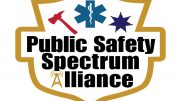Using spectrum above 3-GHz will require too many radio towers and radio sites. Thus 4.9-GHz should not be used in an effort to close the digital divide because it is not economically feasible.
By Andrew M. Seybold
As the new Administration takes over the reins of the U.S. Government, emphasis is being placed on determining the best way(s) to finally close the digital divide and provide broadband and Internet access for the millions who have been left without far too long. Local communities, counties, states, the Federal Government, and the vendor community have chipped away at increasing broadband penetration, but there has been little, if any, coordination to solve the problem. The goal should be to provide broadband capabilities to unserved areas of the United State in a coordinated manner across providers with a focus on avoiding duplicate coverage in some areas and no coverage in others.
The Covid-19 outbreak in early 2020 brought more attention to this issue when many schools were forced to resort to remote learning. Without broadband access, millions of school-age children could not participate, nor could their parents work from home. To facilitate the solution, there needs to be a master plan and an organization that would review and determine the best courses of action (which will be different for different areas) and how to speed planning, funding, building, and operating aspects of providing broadband services.
Today, the new administration, many in Congress, and many at the Federal Communications Commission are rushing toward solutions to close the digital divide. However, it is vitally important that those who want to expand broadband into as many rural areas as possible take time to talk to and engage with people who understand the various types of broadband services that can and should be deployed and who recognize not all radio spectrum is created equal.
Radio Spectrum Characteristics
As a general rule, the lower the frequency, the farther radio waves will travel, the better they will penetrate buildings, and the less susceptible they will be to being blocked by tree leaves, pine needles, buildings, and other obstacles. For the most part, radio signals are line-of-sight in nature, which is why many of today’s cellular towers are 100- to 300-feet high so radio antennas can be placed above as many obstructions as possible.
Today, cellular (broadband) networks use spectrum as low as 600 MHz and as high 2.5 GHz (2500 MHz). Coverage from a 100-foot tower, for example, will be much greater at 600 MHz than 2.5-GHz spectrum from the same tower. Spectrum in the 600–800-MHz bands also better penetrates buildings. As we enter 1-GHz (1000 MHz) and higher bands, it will take more towers to provide the same coverage as towers operating in the lower portion of the spectrum.
5G Coverage
However, 5G, which is the next generation of wireless technology, has completely different characteristics depending on the portion of spectrum in which it operates. T-Mobile, for example, is able to claim a nationwide 5G footprint that includes rural areas because it is deploying 5G at the lowest permissible spectrum in the 600-MHz band. 5G is also being used for mid-band and millimeter wave bands. One way to better understand the differences in coverage depending on the portion of spectrum the 5G system is using is to think of a wedding cake with each layer of the cake becoming smaller as the cake grows higher.

When planning for the best, most efficient, and least expensive ways to provide coverage in rural areas where there is no broadband, one must truly understand which portions of radio spectrum are best-suited for coverage over longer distances. One reason rural areas do not have wireless broadband services today is that there aren’t enough potential paying customers to cover tower costs or even to reach a break-even point for the vendor community.
Using spectrum above 3-GHz will require too many radio towers and radio sites. Thus 4.9-GHz should not be used in an effort to close the digital divide because it is not economically feasible. Matching spectrum range with distance to be covered is the best way to design systems for rural America and will provide the best opportunity to contribute to bridging the “broadband gap” identified in today’s rural communities
Not all radio spectrum is created equal, especially when covering larger geographic areas that are more sparsely populated. This challenge can be overcome but it could be out of reach unless the appropriate radio spectrum frequencies are used. Trying to force-fit a rural solution into radio spectrum that is viable for metro and some suburban areas will do very little to help solve coverage issues in Rural America.
Andrew M. Seybold’s weekly Public Safety Advocate Newsletter appears on this All Things FirstNet website. For more about Andy please click HERE




Be the first to comment on "Rural Broadband: Choosing the Appropriate Radio Spectrum for Rural Broadband"